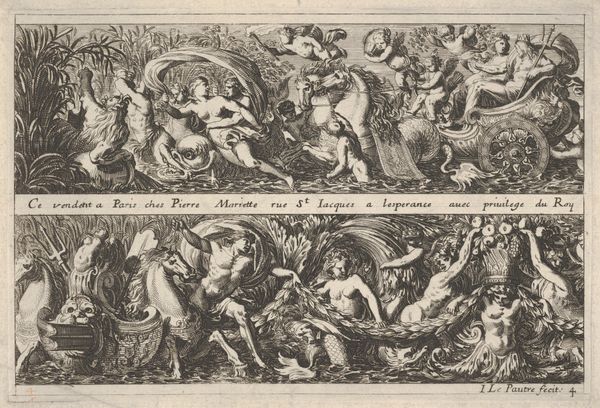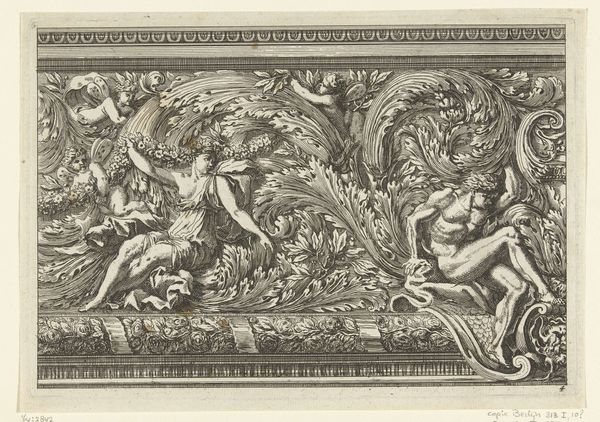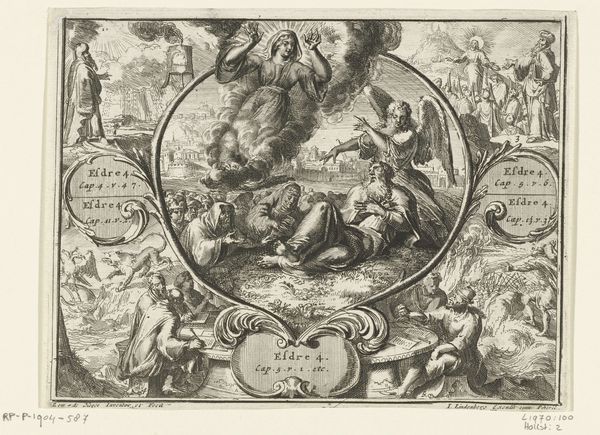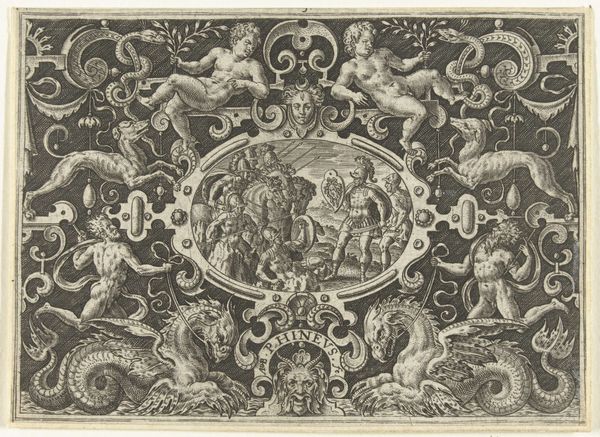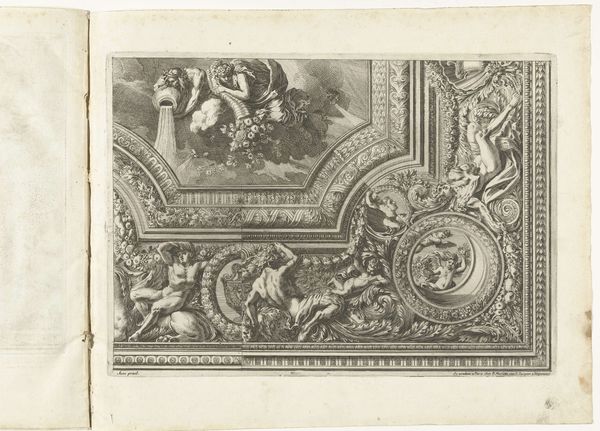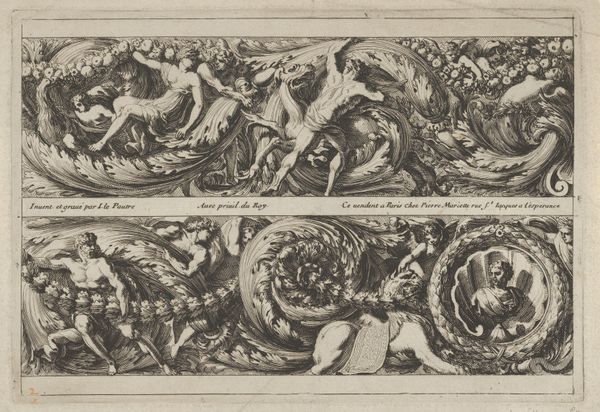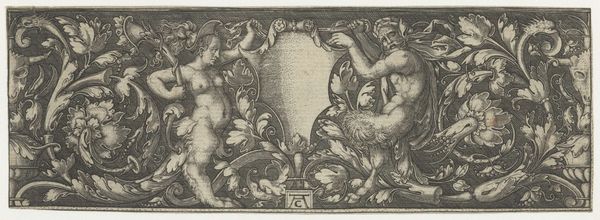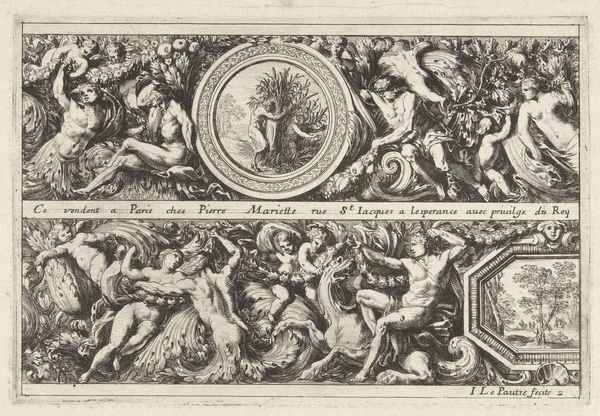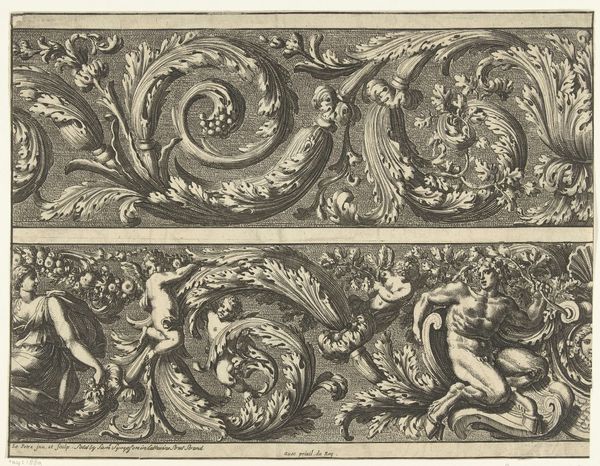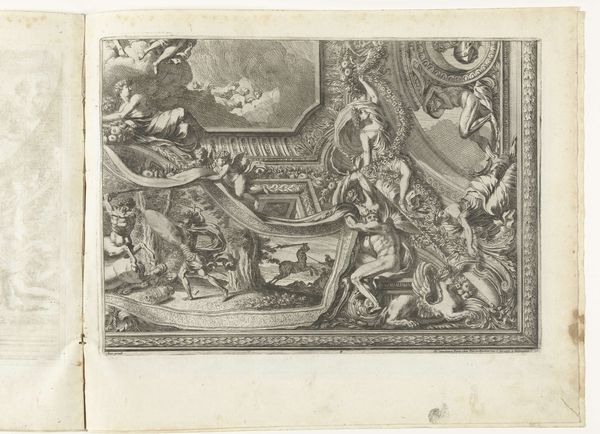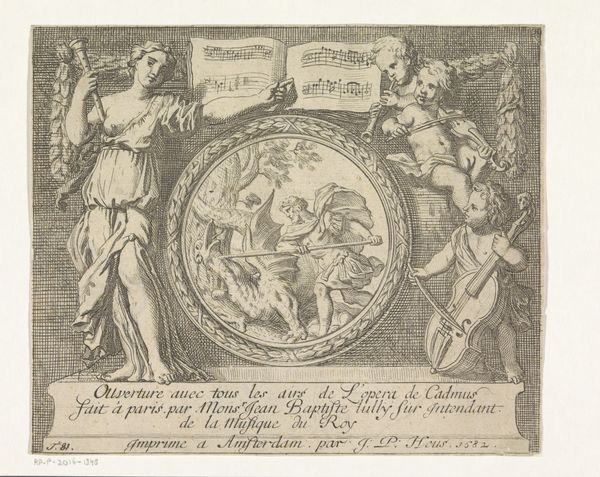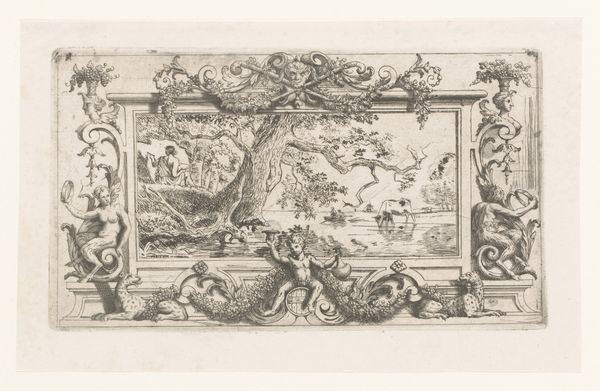
Titelblad: Frizes, feuillages ou tritons marins antiques et modernes c. 1664
0:00
0:00
engraving
#
baroque
#
pen drawing
#
old engraving style
#
figuration
#
line
#
history-painting
#
engraving
Dimensions: height 145 mm, width 218 mm
Copyright: Rijks Museum: Open Domain
Curator: Immediately, this engraving strikes me as incredibly ornate. Editor: It's the title page, made circa 1664, to "Frizes, feuillages ou tritons marins antiques et modernes" by Jean Lepautre, found here at the Rijksmuseum. These kinds of decorative prints served a practical purpose. Curator: Practical, yes, because they were tools for designers. We are looking at reproducible patterns available to be deployed. The production of prints like these created networks between artists, printers, and their patrons. Editor: Absolutely, this isn't just about visual appeal. Consider the symbolism and societal implications of representing mythological figures alongside baroque ornamentation. The idealized human forms contrast dramatically with the more animalistic forms. What societal norms are being visually promoted, or questioned? Curator: Questioned less than circulated, perhaps? Lepautre cleverly mixed imagery from classical antiquity with then-contemporary flourishes. These plates would allow other artists to reproduce design elements with a sense of historical grounding, adding layers of value beyond sheer aesthetics. Editor: Still, this fusion offers a glimpse into how period styles and aesthetics were understood and then commodified. The "antique and modern" is essentially a claim to both tradition and trend. There's a whole visual rhetoric at play. Curator: Indeed. The materials, engraving, paper, the print shop’s location -- they locate us in time. These details reflect labor practices of 17th-century Parisian printmaking workshops and reflect access for artists who may have wished to incorporate similar motifs. Editor: And don't overlook how power is communicated. Who had "pruil du Roy" —royal privilege—giving them legal protection? Curator: Examining Lepautre’s body of work tells us much about the economy of ornament during the Baroque era and allows one to trace stylistic lineage across decades and throughout artistic spheres. Editor: Analyzing such decorative arts opens a pathway to seeing those cultural conversations. I appreciate having this dialogue as it allows us to reflect more on design's complex social function.
Comments
No comments
Be the first to comment and join the conversation on the ultimate creative platform.
